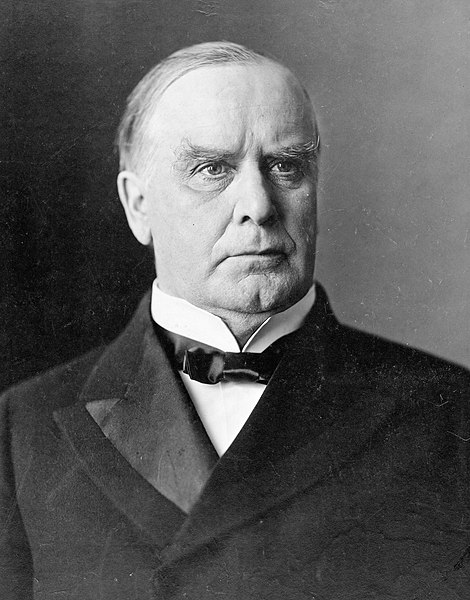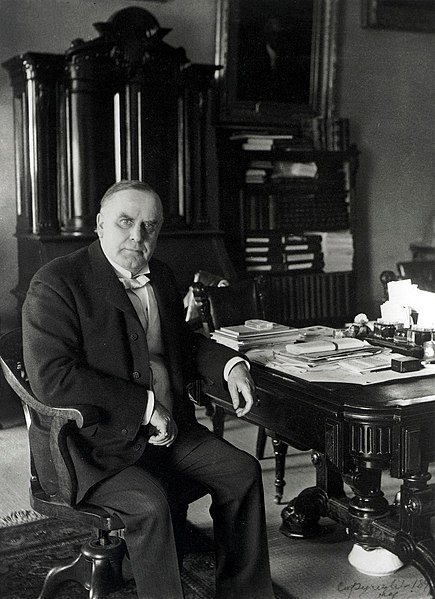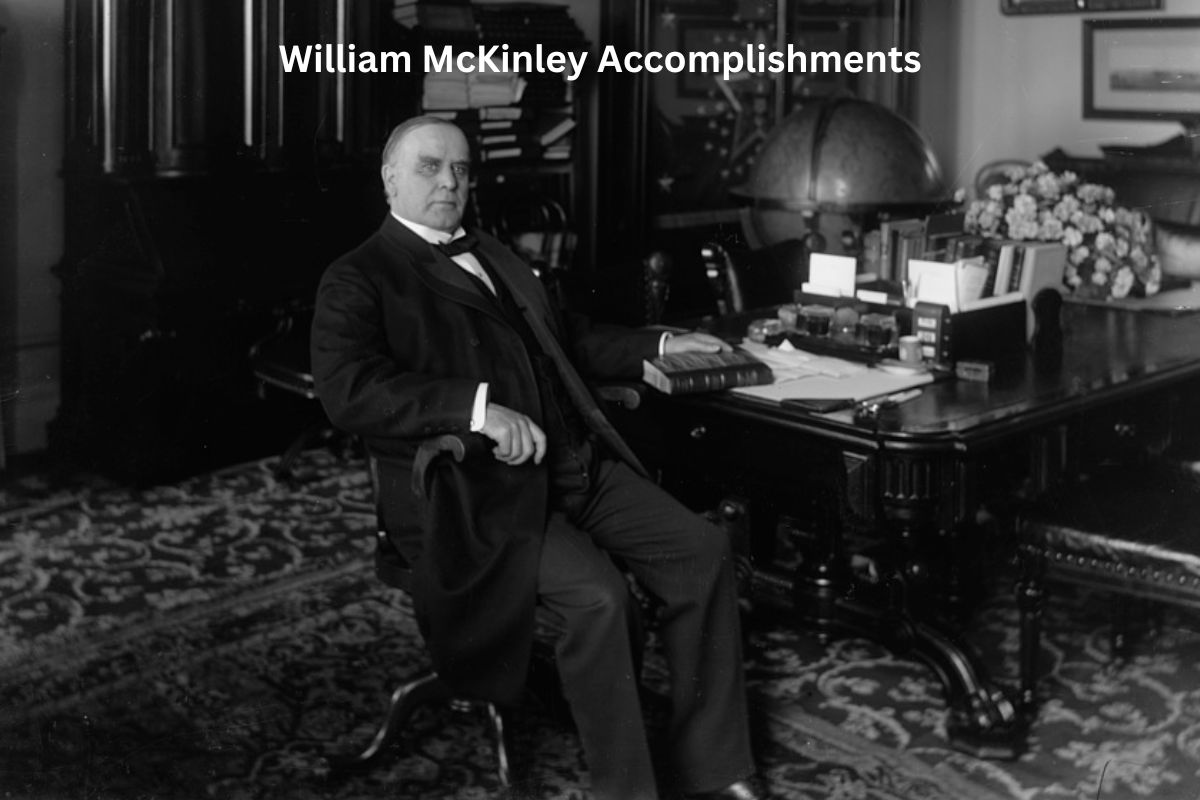William McKinley, the 25th President of the United States, served from 1897 to 1901 and left a lasting impact on the nation during his time in office.
His presidency was marked by a series of significant accomplishments and achievements that contributed to the economic growth, territorial expansion, and modernization of the United States in the late 19th century.
In this overview, we will delve into some of the key accomplishments and achievements associated with his time in office, ranging from economic policies to foreign affairs and domestic initiatives.
Accomplishments of William McKinley
1. Economic Prosperity
During McKinley’s presidency, the United States experienced a period of economic prosperity known as the “McKinley Prosperity.” This era was characterized by steady economic growth, low unemployment rates, and increased industrial production.
A key component of this prosperity was McKinley’s support for protective tariffs, such as the McKinley Tariff Act of 1890.
Also Read: Facts About William McKinley
These tariffs were designed to shield American industries from foreign competition by imposing import taxes on foreign goods, thus encouraging consumers to buy American-made products.
While the tariffs were controversial and faced opposition, they contributed to the overall growth and stability of the U.S. economy during McKinley’s tenure.

2. Gold Standard Act
In 1900, McKinley signed the Gold Standard Act into law. This legislation officially established the gold standard as the basis for the U.S. monetary system.
Under the gold standard, the value of the U.S. dollar was tied to a specific amount of gold, which provided stability to the nation’s currency.
This move was intended to boost investor confidence, attract foreign investments, and promote economic stability. It also helped to maintain the integrity of the U.S. dollar in international trade and finance.
3. Annexation of Hawaii
In 1898, during McKinley’s presidency, the United States officially annexed the Hawaiian Islands through the Newlands Resolution. This action marked the end of Hawaii’s status as a sovereign nation and paved the way for its eventual incorporation as a U.S. territory.
The annexation was driven by various factors, including strategic military interests in the Pacific, economic opportunities in Hawaii, and the desire for a coaling station for American ships.
While the annexation was contentious and faced opposition from some Hawaiians, it was a significant step toward Hawaii’s eventual path to becoming the 50th U.S. state in 1959.
4. Spanish-American War
McKinley’s presidency is closely associated with the Spanish-American War, which occurred in 1898.
This conflict began with the explosion of the USS Maine in Havana Harbor, leading to public outcry and demands for intervention in the Cuban War of Independence from Spain.
McKinley, initially hesitant to involve the United States in the conflict, eventually asked Congress for a declaration of war. The war was short but significant, resulting in several achievements:
- The United States emerged victorious, gaining control of former Spanish colonies, including Cuba, Puerto Rico, Guam, and the Philippines.
- The Treaty of Paris of 1898 officially ended the war and established American sovereignty over these territories.
- The Spanish-American War marked the United States’ emergence as a global power and its expansion beyond continental North America.

5. Open Door Policy in China
During McKinley’s presidency, the United States pursued the Open Door Policy in China.
The policy aimed to protect American commercial interests in China by advocating for equal trading rights and access to Chinese markets for all foreign powers. It also sought to prevent the colonization of China by any one nation.
The policy was articulated in a series of notes and diplomatic communications, emphasizing the importance of maintaining China’s territorial and administrative integrity.
The Open Door Policy helped safeguard American trade interests in China and promoted the principle of open access to global markets.
6. National Parks Creation
McKinley’s administration contributed to the preservation of America’s natural beauty by creating several national parks.
The establishment of these parks was part of the broader conservation movement in the late 19th and early 20th centuries. Some notable national parks created during McKinley’s presidency include:
- Mount Rainier National Park (Washington): Established in 1899, it protects the stunning Mount Rainier and its surrounding ecosystems.
- Crater Lake National Park (Oregon): Created in 1902, it encompasses the pristine Crater Lake, the deepest lake in the United States.
- Yosemite National Park (California): While Yosemite was established as a national park in 1890 before McKinley’s presidency, his administration continued to support conservation efforts in this iconic park.
These actions reflected McKinley’s commitment to preserving natural resources and the nation’s scenic wonders for future generations, contributing to the broader conservation movement that continued in subsequent administrations.
7. Veterans’ Pensions Increase
McKinley’s administration demonstrated its support for veterans by approving an increase in pensions for Civil War veterans and their dependents. This move aimed to provide financial assistance and recognition to those who had served during the Civil War.
It was an important step in acknowledging the sacrifices made by veterans and their families and ensuring their well-being in their later years.
8. Construction of the Panama Canal (initiated)
While the construction of the Panama Canal was primarily associated with McKinley’s successor, Theodore Roosevelt, it’s important to note that the groundwork for the canal’s development began during McKinley’s presidency.
McKinley recognized the strategic importance of a canal through Central America for American trade and military interests.
His administration initiated negotiations and surveys to determine the most feasible route for the canal, eventually leading to the decision to construct it in Panama rather than Nicaragua. The actual construction of the Panama Canal, however, began under President Roosevelt’s administration.
9. Reelection in 1900
William McKinley was reelected as President in the election of 1900. He ran as the Republican candidate and won a decisive victory against the Democratic candidate, William Jennings Bryan.
McKinley’s reelection reflected the public’s confidence in his leadership and policies, including his economic agenda and the successful outcome of the Spanish-American War. It also affirmed his vision for the country’s continued growth and stability.
10. Modernization of the Navy
During McKinley’s presidency, efforts were initiated to modernize and expand the U.S. Navy. The United States recognized the importance of having a strong naval presence, both for national defense and to protect American interests abroad.
While significant naval expansion and modernization efforts occurred in the years following McKinley’s presidency, his administration laid the foundation for these developments.
This modernization paved the way for the United States to become a formidable naval power in the 20th century, with a navy capable of projecting force globally.
